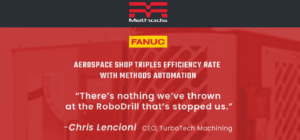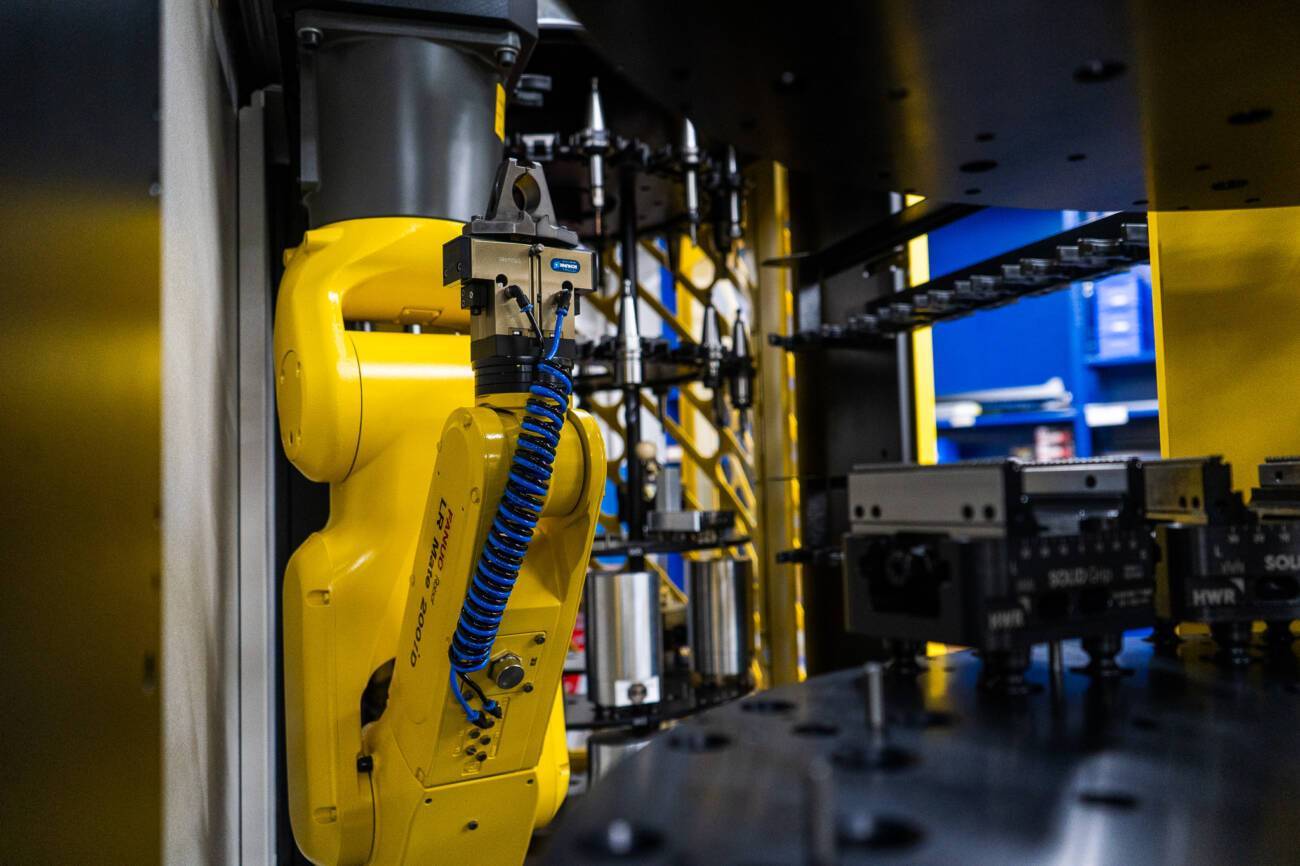In today’s manufacturing climate, there exists several converging forces that are actively disrupting the industry—and will continue to for so time.
1. Digital transformation of systems and processes from traditional methods to digital-first platforms.
While many other industries have navigated the digital transformation (DX) wave for some years, manufacturing has been slower to adapt. This has impact wide swaths of the industry, leaving many business behind in the times when it comes to business systems and operational methodologies.
2. A transitioning labor force
An aging generation of workers exits the manufacturing industry every day. With their departure goes decades of institutional knowledge and capabilities. The retiring workers are not been backfilled by younger workers at the pace required to maintain labor and productivity rates needed to organically grow the industry.
3. Growing value in your operations
Value—internally and externally—is essential to business growth. That applies to both the value companies deliver to their customers, but also to the value driven to their own team members who desire leading technologies that help them maximize productivity, personal and professional growth, and technical skills.
2.1 million jobs unfulfilled
$1 TRILLION IMPACT BY 2030¹
Consider the impact on the domestic manufacturing sector. These figures are what make the Automation Imperative so important. This isn’t just about having the next piece of shiny technology. Real dollars and real business viability are at stake impact not just the CNC providers and/or the robotics providers. The entire manufacturing ecosystem will be impacted. If our industry does not adapt, or adapt fast enough, the downstream effects to domestic manufacturing.
OPTIMISM IS GROWING²
The good news for our industry is that perceptions are changing. For too long, there was this debate about whether automation would cause the loss of human capital and human jobs. We at Methods have been building automation systems for more than 15 years, and have never believed in that narrative. In fact, most of our customer engagements on automation starts with some form of:
“I need to eliminate human hands on X tasks so my team member can take on more significant and/or strategic projects.”
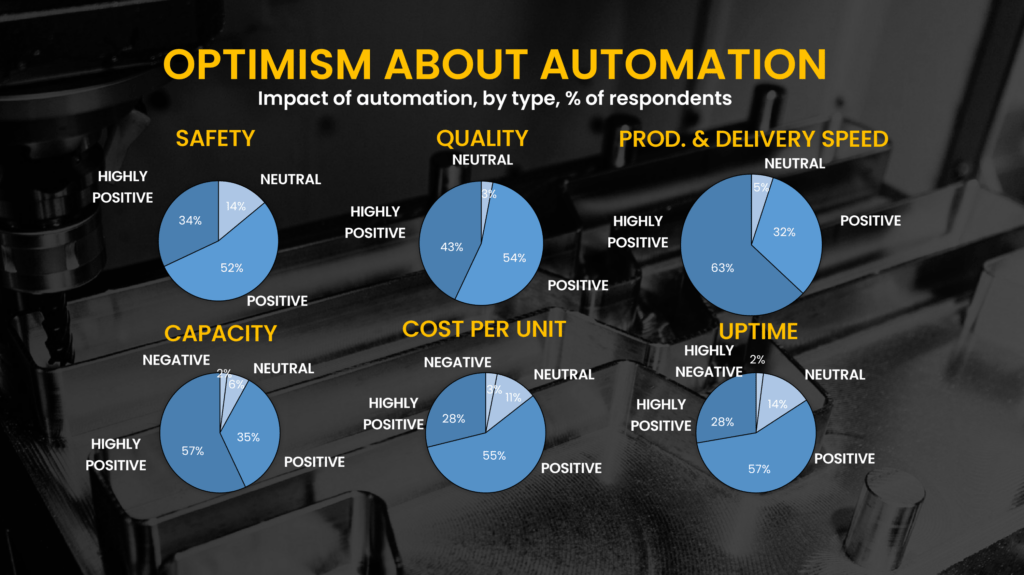
62 % Desire providers who offer full-service models for implementation and support
55 % Industrial players prefer a partner act as a single point of contact for hardware and software support
25 % Cite automation as a share of capital expense spending in the next 5 years
BUT HURDLES REMAIN²
Research increasingly finds manufacturers are aware and mindful of the role technologies will play in their long-term competitiveness. But they struggle with the cost and human resources to take advantage of these opportunities.
94 % Believe digital solutions will be more important to future automation efforts
71 % Cite capital cost of robots as a primary challenge to adoption
61 % Cite lack of experience as primary challenge to adoption
THE SHOP ONWER’S DILEMMA
Shop owners today are navigating these realities while trying to grow their businesses. Finding labor remains difficult. Budgets are flatlined—worse. Shop profitability is declining as a result of higher interest rates, material costs, wages, and increasing S&GA costs. Many are family-owned companies whose roots run deep, so the difficulties are all the more acute and painful.
They know they have all these challenges, but need help solving them.
How do they manage the simultaneous challenges of labor, costs, and business competitiveness while charting a path for growth?
HOW DOES MY SHOP GET STARTED?
Don’t start by focusing on an ideal end state. Start with what you know, what you have, and go from there. The low-hanging fruit: Repetitive, time-consuming tasks that utilize too much human capital where that person(s) could contribute and grow elsewhere more strategic to the business.
Just as important: A financial plan for your business investment that measures:
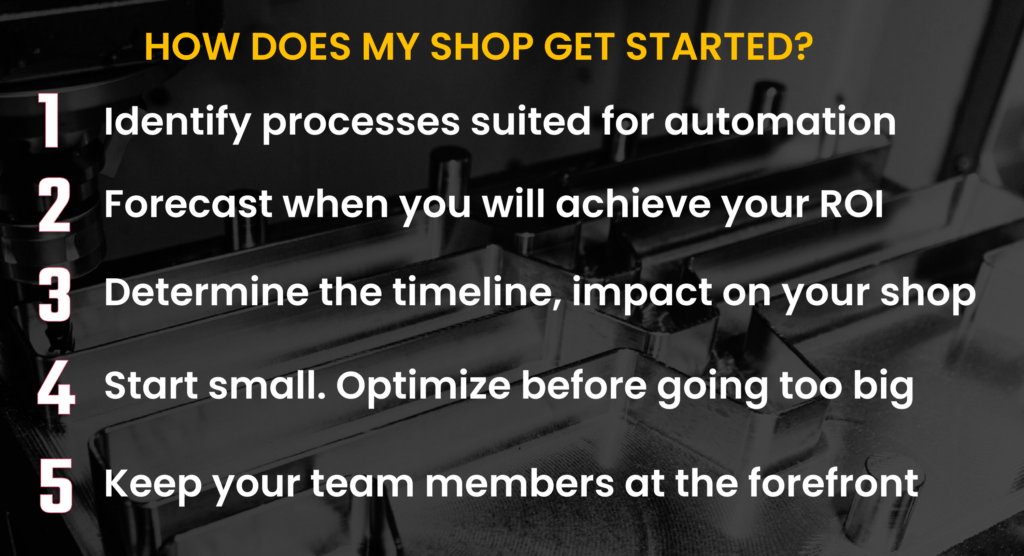
KEY TAKEAWAYS
EVOLVE OR GET LEFT BEHIND
The “Digital Factory” is real and more than just a concept. It’s the realization of a connected and integrated manufacturing environment. By harnessing the power of digital technologies, we are breaking down the barriers between the virtual and the physical, enabling a level of precision and efficiency that was once unimaginable.
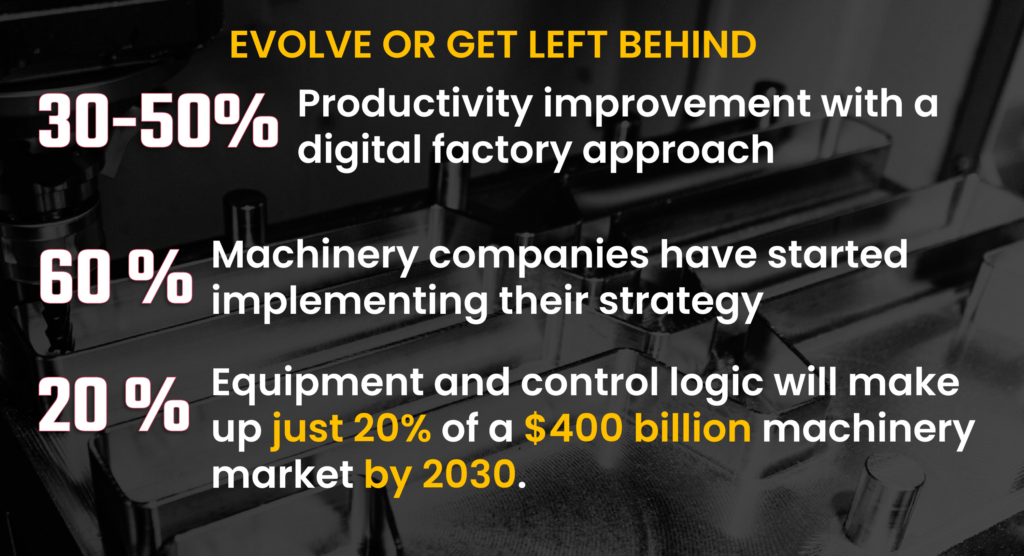
SOURCES:
- Source: Deloitte and The Manufacturing Institute
- Source: McKinsey – Unlocking the Industrial Potential of Robotics and Automation
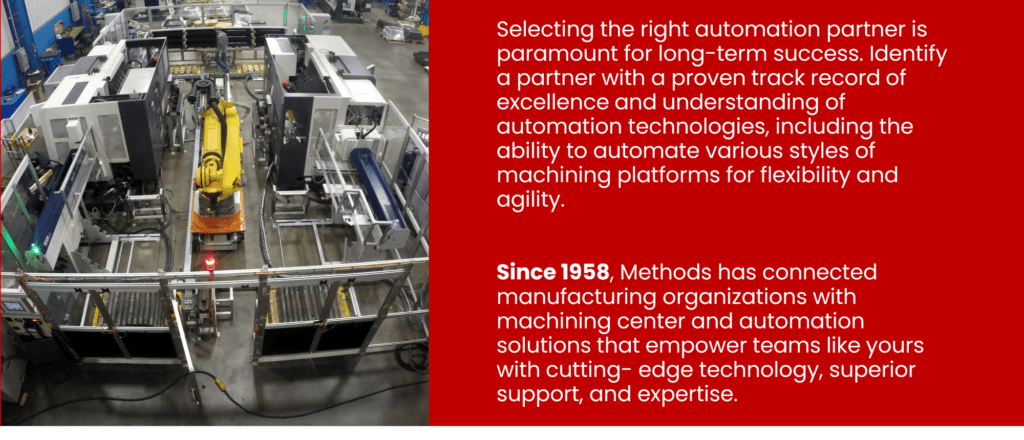

Case Study
Aerospace Shop Triples Efficiency with Methods Automation
